VW reveals three-row ID. Buzz for North America, sales start 2024


VW has revealed the much-anticipated North American version of its ID. Buzz electric microbus, with an extra row of seats and starting deliveries next year.
The new ID. Buzz version is much like the two-row European spec, but with a little more of just about everything. It has 282hp as opposed to 201hp (plus an available 330hp dual-motor configuration) with a top speed of 99 mph instead of 90 mph, 91kWh instead of 82kWh of battery, and is a full 10 inches longer.
Those additional 10 inches all come in the form of a 10-inch-longer wheelbase on the NA-spec. At 192.4 inches long, the three-row ID. Buzz is actually a full 2 feet longer than VW’s original 168-inch-long microbus. This all means more space for humans and cargo compared to the two-row version (though the extra row of seats takes up some of that space, but the 2nd row folds flat and 3rd row can be removed).



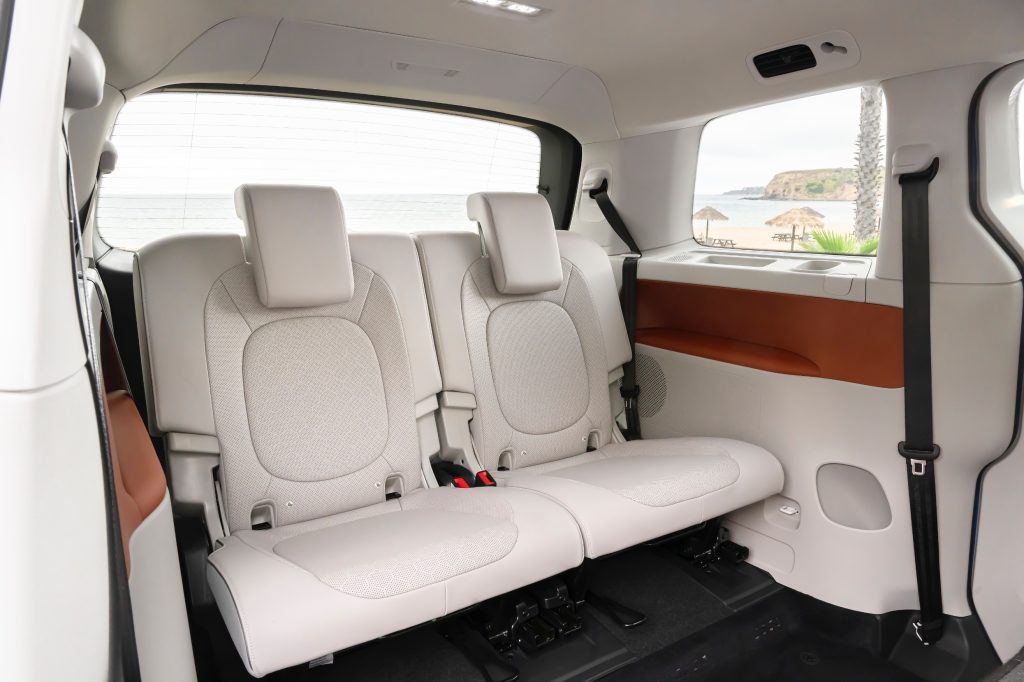
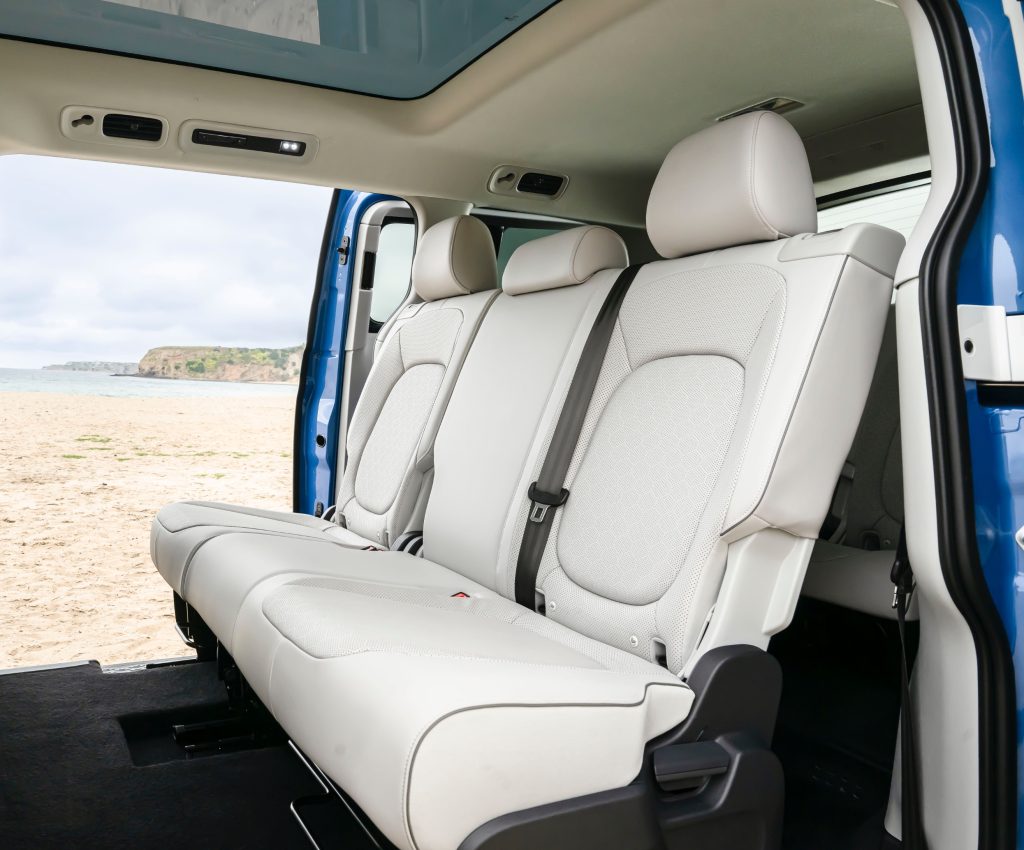
It also means room for an extra 9kWh of battery. VW hasn’t yet announced the range of the three-row version, though the European spec has 263 miles on the WLTP cycle. While the NA-spec has a larger battery, it’s also a longer and heavier vehicle, and EPA mileage estimates are significantly lower than WLTP estimates, so we can’t be sure what the final number will shake out as.
We don’t know if there are any changes to the Buzz’s charging capability either – the EU spec has 170kW charging, and that will likely stay the same for the US version, but a larger battery could enable slightly faster charging speeds, which would be nice.
The only efficiency-related answer VW provided in its press release is that the Buzz has a drag coefficient of .29, which it calls “very good for a vehicle of this shape” (i.e., a brick).




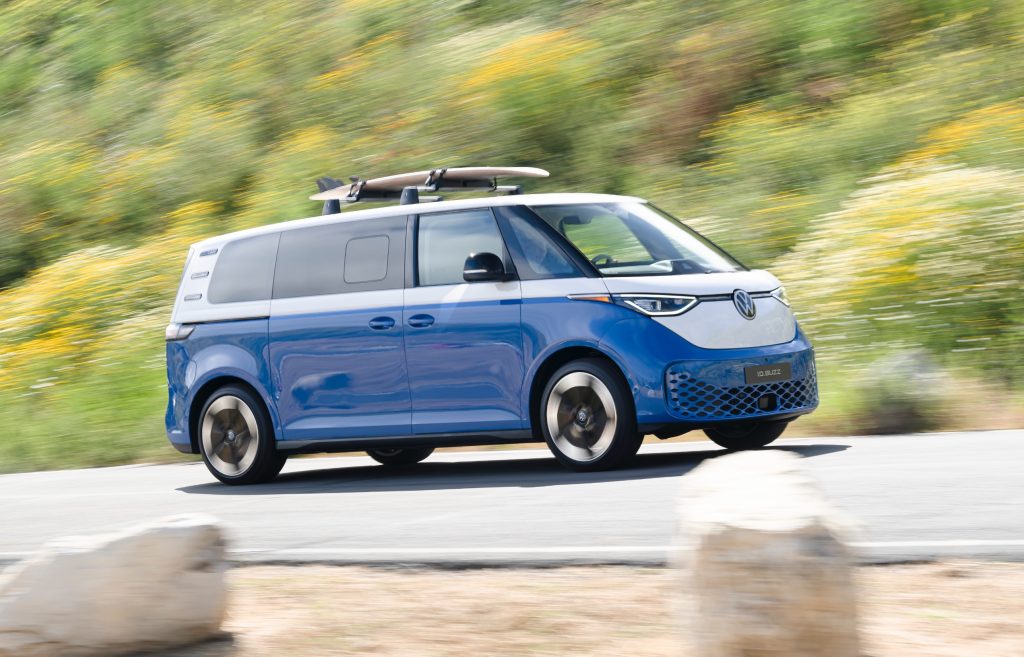
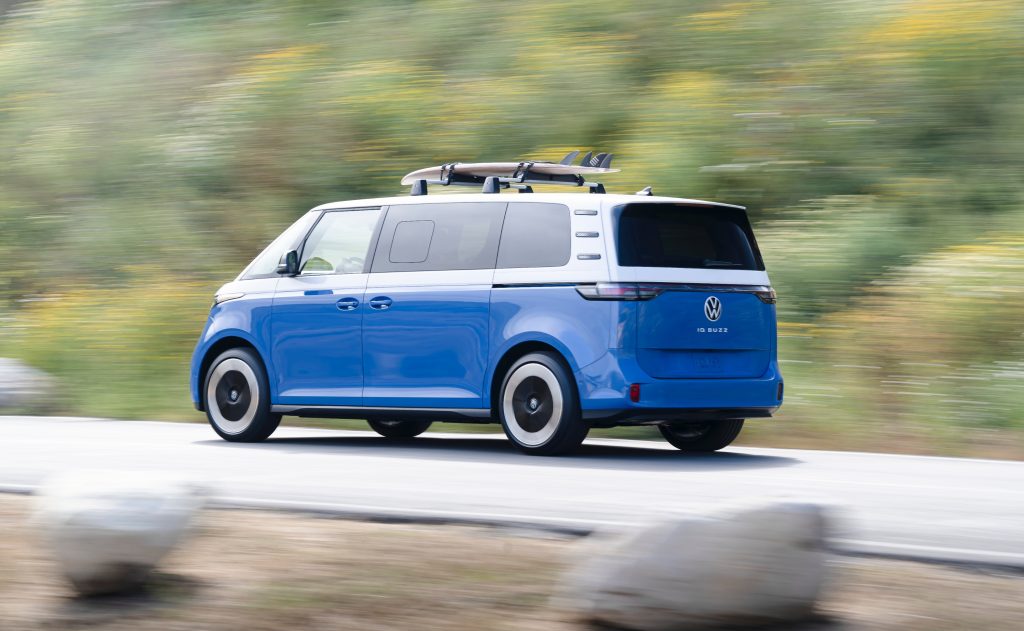
As for other differences, the North American model comes in three new colors that aren’t available on the European spec: Cabana Blue, Metro Silver, and Indium Grey.
VW hasn’t yet specified a price for the US version of the ID.Buzz, but it starts in the $65K-$70K range in Europe after taxes. The US version will be bigger, so might also cost more, but the starting price would likely be quoted as a little lower, since US taxes are added after the fact. Nevertheless, we can expect that this vehicle will probably be priced closer to the higher end of the electric SUV market, rather than the entry level.
We mention electric SUVs because there isn’t really another vehicle like this. There’s one plug-in hybrid minivan, the Pacifica Hybrid, and some commercial electric vans like the eSprinter and E-Transit. The ID. Buzz sits somewhere adjacent to a van and a minivan, with more character than either, so it’s hard to really find a direct competitor for it.





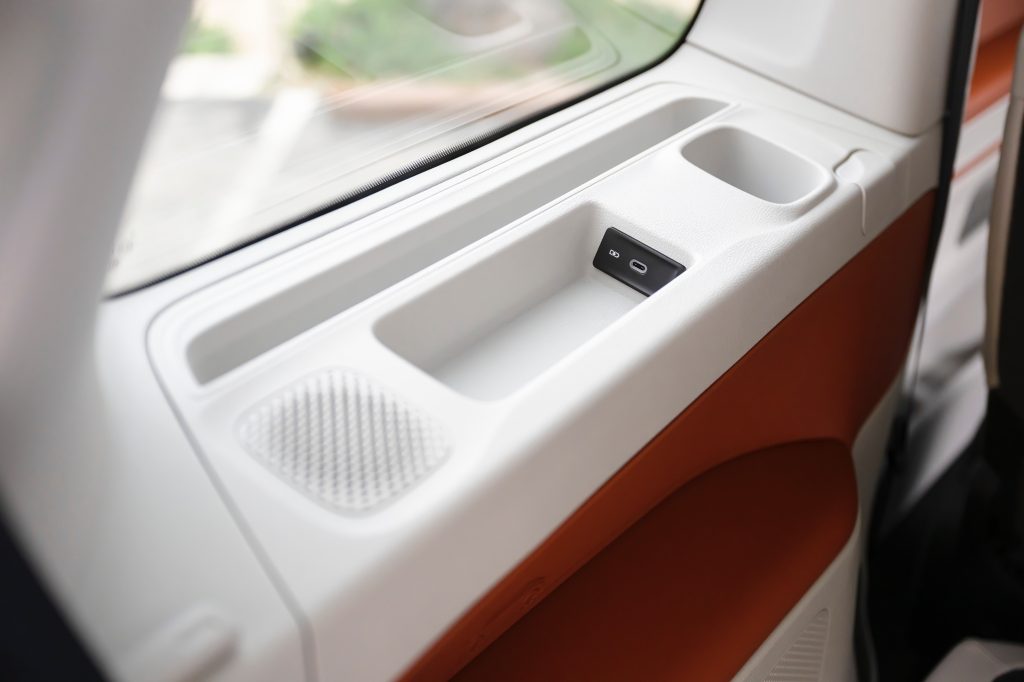
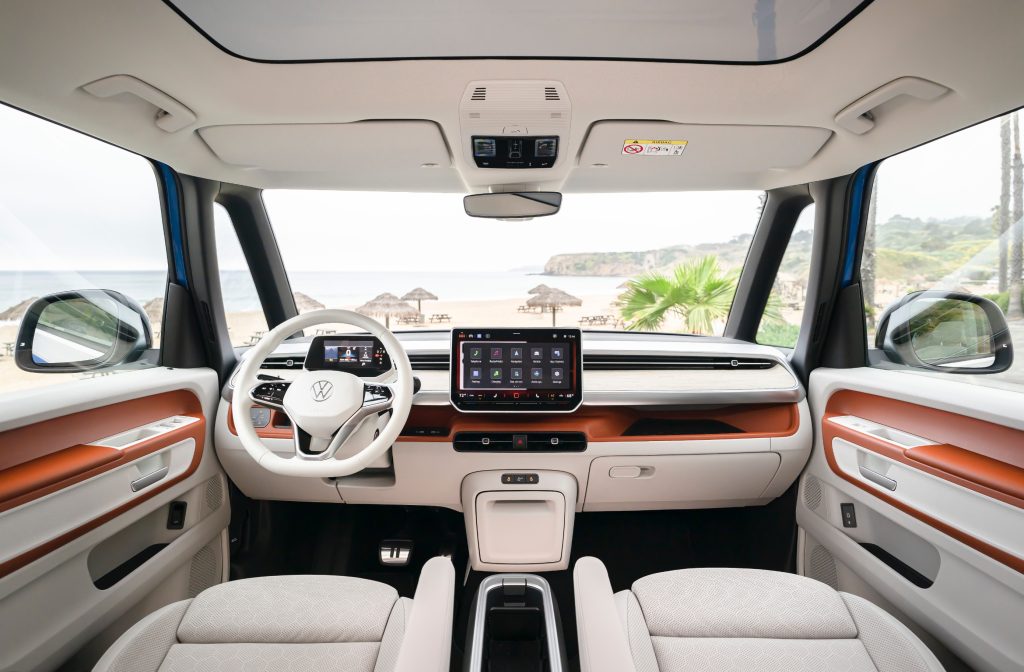
But the closest thing is probably minivans, and this will be much higher price than the gas-powered entry-level of that market, which is in the ~$35K range. That said, the Buzz gets access to incentives and will have lower running costs from energy and maintenance.
And, as the first all-electric entry into the market, VW probably thinks it can justify a higher price. Anecdotally, there does seem to be significant demand out there for a cool minivan-esque electric vehicle – especially one that could enable interesting conversion/adventure options.
VW didn’t give us any more news about the upcoming California camper van that it’s planning, but the long wheelbase gives VW room to work with. With all that space and built-in electricity, there should be some really cool options out there for van-lifers (perhaps even ones who want to stay off the grid with solar panels).
The public will get its first chance to look at the 3-row ID. Buzz later today, from 11 a.m. to 2 p.m. at VW’s unveiling event in Huntington Beach, California, at the beach parking lot at 21101 E. Pacific Coast Hwy.
City Dwellers’s Take
We’ll be at the reveal event later today in Huntington Beach, so we’ll get a chance to have some hands-on time with the van and see what it’s like in person.
As someone whose family had a VW Vanagon Westfalia camper growing up, the VW bus has special significance to me. My family went on a lot of adventures in that bus, and for all its quirks, it was an awesome vehicle.
And when I got into electric vehicles, I constantly thought about what a great platform a bus would be for an EV, with plenty of room under the floor for batteries which could power various camping accessories (stoves, lights, entertainment, etc.).
Electric drive can provide significant benefits to minivan-type vehicles because there’s plenty of room on the floor of the vehicle to fit a battery. This helps designers with packaging the powertrain, freeing up space that would otherwise be filled with engines, driveshafts or the like.
So when Voltswagen showed off its original ID. Buzz concept and leaned hard into the cool retro style of it all, I was immediately sold on the idea. I, and many others, thought it was just too cool.
Then reality set in, and the car ended up looking a little less “cute” than the original retro concept. The finalized version got a little more boxy shape, lost the characteristic old multi-window look, and the commercial/cargo version even lost the rear windows to just look like a normal van.
But still, between the two-tone paint job and short overhangs, the ID. Buzz remains more “fun” than a normal van. And it does have more character than most minivans, and is less boxy than other vans like the Sprinter and Transit.
I do question, however, why North America can’t have the two-row version. It seems like everyone is releasing a three-row EV this year, as if suddenly every American family gained two or three extra members that their European counterparts did not.
Somehow, my family’s 180-inch camper slept my whole American family comfortably, despite being a foot shorter than today’s offering – and it even had a kitchen, too.
We have a strange obsession with bigger vehicles here, despite their enormous costs to society (e.g., thousands of pedestrian lives). Some would say that Americans simply demand larger vehicles, but the problem is more complex than that – it’s largely driven by poor regulation that incentivizes the upsizing of cars. Thankfully the EPA has shown signs that it would like to bend the needle back, but somewhat slowly.
Until then, we still get a neat, retro-esque bus that looks like it could get some awesome camper capabilities. But some of us may still wait for a more micro-version of the classic microbus, instead of the maxi-micro-bus America is getting now.
And there are still some questions that are yet unanswered (price, range, charging), but I’m excited to see what VW does with this bus anyway – and to see it in person in a few hours at the Huntington Beach reveal.
FTC: We use income earning auto affiliate links. More.